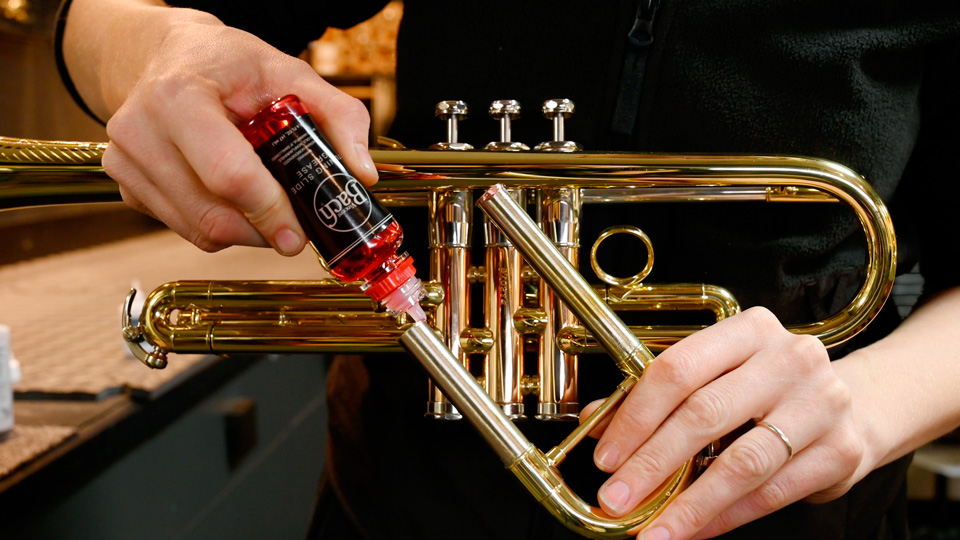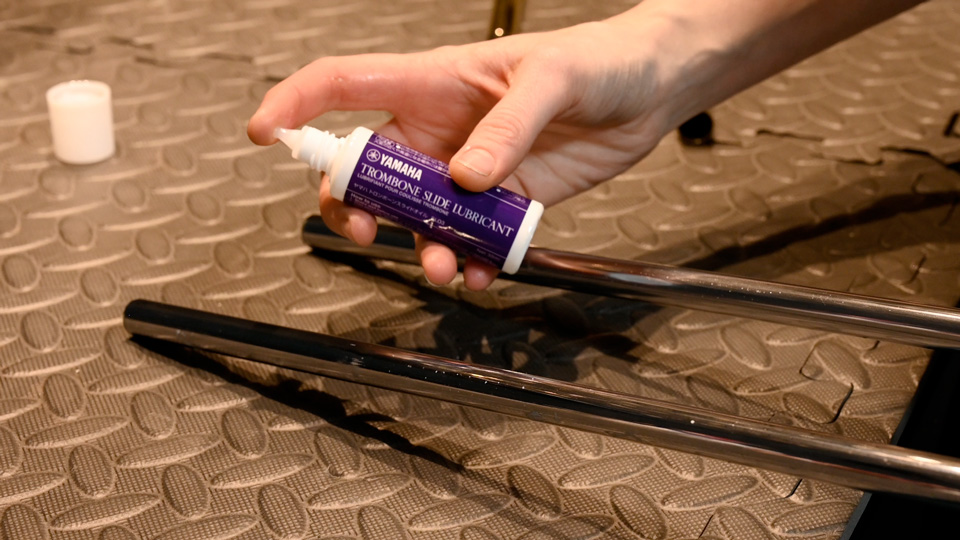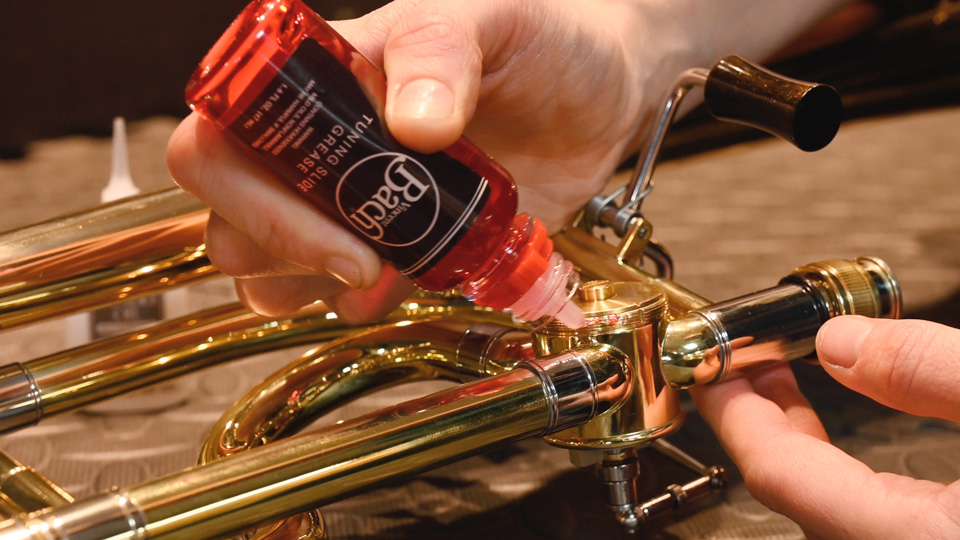Brass Instruments: Lubrication Advice
6th December 2023Join Sunniva from the Dawkes Workshop as she walks through our suggested lubrication and maintenance tips for piston and rotary brass instruments. These recommendations are based on thousands of brass instrument repairs and access to a wide variety of lubricant solutions. The accompanying video demonstrates how to apply each lubricant and discusses why we recommend it.
Importance of Lubrication
Every brass instrument has a collection of moving parts that require regular lubrication. To ensure the fast, smooth and reliable function of these parts it’s important to choose the right lubricant. As a general rule, we’d like to remind players to regularly wipe away and clean any valve or slide before re-applying lubricant.
In this video and blog we’ll discuss options for pistons, rotary valves, fixed slides, mobile slides and playing slides. Each written segment will include a timestamp for the video above (eg 0:21-1:03) so you can quickly jump to the part you need and see an example of it being applied.
Fixed Tuning Slides
(0:21-1:03) Although we call these ‘fixed’ slides they do of course need to move, but they don’t need to be as free-moving as mobile/triggered slides which adjust by a trigger or with a quick movement of a thumb or finger. The ‘fixed’ tuning slide is usually your main tuning slide (and 2nd slide on small piston brass) and they need to stay more securely in position. As such we recommend a lubricant that is slightly thicker and long-lasting.
- Highly Recommended: Bach Tuning Slide Grease
- Alternative #1: Windcraft Slide Grease – Lipstick Style
- Alternative #2: La Tromba Slide Grease – Tub

Mobile/Trigger Slides
(1:03-1:46) These slides are usually the 1st/3rd slides or indeed any that is needed to adjust as you play. This can be via a thumb saddle, finger hook, or indeed a trigger mechanism. These slides need a thinner solution so they retain their swift mobility. Commonly they need cleaning and re-applying more often than your fixed-type slides.
- Highly Recommended: Yamaha Tuning Slide Oil
- Alternative #1: Ultra Pure Tuning Slide Oil
Trombone Playing Slides
(1:46-2:34) Due to the tolerance of different Trombone slides some people prefer a range of solutions here. There are a number of options where you mix 2-parts, or you use a cream and spray it with water to re-invigorate it. However, in our workshop we’ve found the best all-round solution for the vast majority of Trombones is the Yamaha Slide Lubricant which is a single bottle solution. It’s not cheap, but it’s high quality and very long lasting.
- Highly Recommended: Yamaha Slide Lubricant
- Alternative #1: Slide-o-Mix Rapid Comfort
- Alternative #2: Slide-o-Mix 2 Part Treatment

Rotor Valves
(2:34-3:17) Rotor valves are commonly used on French Horns and Bb/F or Bass Trombones. A rotor valve has a much higher tolerance within its casing than a piston valve. As such, there are a range of specific oils for use on the rotor sections. Alongside the rotor itself the mechanism around it also needs lubrication. This includes the spindles and any segments of the rotor arm and joints.
- Highly Recommended: Yamaha Rotor Oil
- Highly Recommended: Yamaha Spindle Oil
- Alternative #1: Paxman Rotor Oil
- Alternative #2: Paxman Spindle Oil
Piston Valves
(4:01-5:24) Piston valves can vary in their tolerance within the valve casing. As a general rule, student and older instruments need a slightly thicker oil. Mid-range and professional level instruments need thinner oils because they operate on smaller tolerances for performance reasons. We know many players have their own preferences so if you have something that works, stick with it! However, if you are experiencing slightly sticky valves and/or want something more fluid then give these a try.
- Highly Recommended: Yamaha Synthetic Oil (Light, Regular and Vintage)
- Alternative #1: Denis Wick Advanced Formula
- Alternative #2: Blue Juice
Final Tip…
(5:24) For you top/bottom valve caps (on piston instruments) or for the rotor caps (French Horns/Trombones) we’d recommend applying a small dab of the Bach Tuning Slide Grease to help prevent corrosion.
